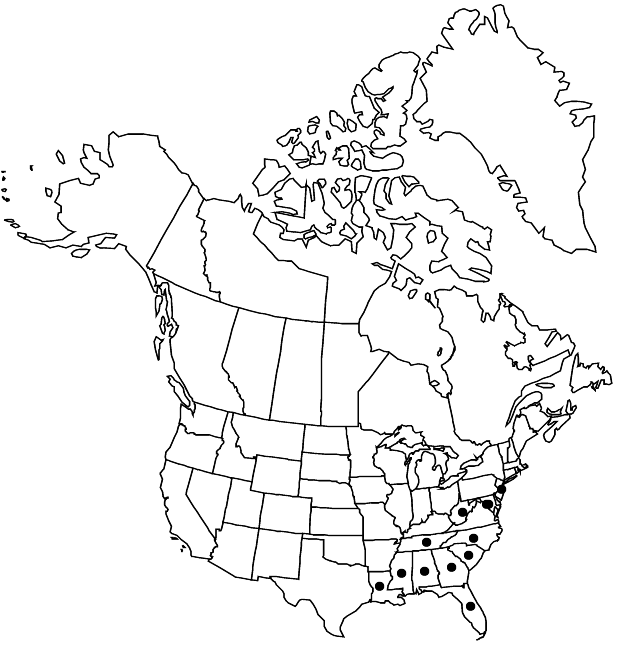Gaylussacia dumosa
Mem. Amer. Acad. Arts, n. s. 3: 50. 1846,.
Plants 1–3(–4) dm, forming small colonies; branches ascending; twigs of current season pale green, stipitate-glandular-hairy. Leaves: petiole 0.5–1.5 mm; blade light green abaxially, shiny dark green adaxially, oblanceolate to obovate, 2.5–4 × 0.3–1 cm, subcoriaceous, base cuneate, margins entire, (scattered stipitate-glandular-hairy and ciliate, 2–5 cilia per mm), apex obtuse to subacute, mucronate, surfaces scattered stipitate-glandular-hairy and sessile-glandular, adaxial surface sometimes glabrescent. Inflorescences erect or arching, 5–8-flowered, bracteate, 3–6 cm, stipitate-glandular-hairy; bracts persistent, leaflike, expanding to 5–12 mm, equaling or longer than pedicels, hairy and stipitate-glandular-hairy. Pedicels 2–3 mm, hairy and stipitate-glandular-hairy; bracteoles 1–2, 2–5 mm. Flowers: sepals 5, 2 mm, sparsely to moderately hairy (hairs 0.2–0.3 mm) and stipitate-glandular-hairy; petals 5, corolla white to pink, sometimes reddish, campanulate, 3–5 mm, lobes triangular, 1–1.5 mm; filaments 0.3–0.5 mm, sparsely hairy; anthers included, 3–3.5 mm, thecae divergent distally; ovary stipitate-glandular-hairy, hairs 0.2–0.3 mm. Drupes juicy, insipid, black, 6–8 mm diam., stipitate-glandular. Seeds 1.5–1.8 mm.
Phenology: Flowering late spring–early summer.
Habitat: Xeric sandhills, xeric to dry pine-oak uplands, oak barrens and heaths, mesic to wet pine flatwoods and pine barrens, dry to moist pine savannas, sometimes in seepage communities
Elevation: 0-1200 m
Distribution

Ala., Fla., Ga., La., Miss., N.C., S.C., Tenn., Va., W.Va.
Discussion
Gaylussacia dumosa and G. bigeloviana have been confused due to a reliance on insufficient characters to distinguish them and due to descriptions and ranges that were based partly on misidentified specimens. Gaylussacia dumosa is a low shrub of the coastal plain and lower piedmont, with scattered occurrences in the upper piedmont and at moderate elevations in the mountains.
Selected References
None.